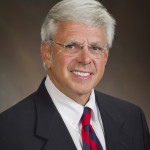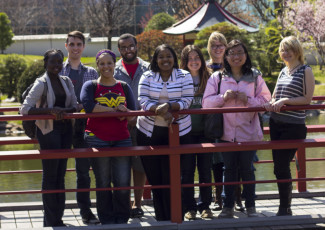Q&A: President of Aspen Prize–Winning College Discusses Leadership
By Emily Rogan
April 17, 2015
Jackson Sasser shares his thoughts on building a “culture of excellence” in the 21st century.
 Santa Fe College, in Gainesville, Florida, is the 2015 recipient of the Aspen Prize for Community College Excellence. Selected from among thousands of colleges, Santa Fe has a completion rate of 62 percent compared with the national average of 40 percent, and 70 percent of Santa Fe’s students are accepted at the University of Florida, in Gainesville. Since 2002, Jackson Sasser has been president of Santa Fe College. He attributes the college’s success to the faculty and the students and the “culture of excellence” that exists throughout the campus. In this 21st–Century Center interview, Sasser discusses some of the college’s successful programs and reflects on factors that have contributed to its achievements.
Santa Fe College, in Gainesville, Florida, is the 2015 recipient of the Aspen Prize for Community College Excellence. Selected from among thousands of colleges, Santa Fe has a completion rate of 62 percent compared with the national average of 40 percent, and 70 percent of Santa Fe’s students are accepted at the University of Florida, in Gainesville. Since 2002, Jackson Sasser has been president of Santa Fe College. He attributes the college’s success to the faculty and the students and the “culture of excellence” that exists throughout the campus. In this 21st–Century Center interview, Sasser discusses some of the college’s successful programs and reflects on factors that have contributed to its achievements.
How important is a college president, in terms of a college’s success?
I was president at Lee College, in Texas, for 10 years before coming to Santa Fe in 2002. I think it really matters how long a president stays at a school. Presidents who make commitments to colleges for some period of a time make a difference, rather than those who use it as stepping-stones in their careers. It’s got to be the right fit, but if you look at colleges that prosper, that is a factor.
How would you characterize your leadership style?
Faculty-centric and supportive. My job is to get them the resources and get out of the way. I love these employees, and I’m in awe of what they do every single day — from the lowest paid person to the trustee. There is incredible talent, joy and teamwork. We are obsessed with solving problems together. We do not chase trends or publicity; there is a singular focus on student success.
What’s your relationship like with your educational partners?
We get the egos and the turf wars out of the way and do what’s best for students. Seventy percent of Santa Fe students transfer successfully to University of Florida and do as well or better than noncommunity college students. University of Florida refurbished a building on Santa Fe’s campus, The Gator Den, where its staff can talk to and recruit our students; we’re working together.
We also work closely with the two K–12 school districts; we’re strategically placed in the middle. We’re the convener, and we provide the transition.
Can you provide a few examples of Santa Fe’s successful initiatives?
I want every student at this college to have an international experience. We have more international students in the classrooms, so students learn about different values, religion, mores and customs.
With black males persisting less than 20 percent, we started My Brother’s Keeper, a mentoring program, to address issues in both their academic and personal lives. To address the digital divide in our minority communities, we refurbish old computers and put them in churches, homeless shelters and other areas of public use to give access to those who don’t have it.
Pathways to Persistence provides mentors to GED students for academic fundamental support, to respect where they are now and get them to a better place. College experience is college experience; we don’t water things down here.
We have integrity in our advising process. With Navigating the College Experience, there is a symbolic marriage between student affairs and the academic staff. Each student is assigned an adviser, and we offer intentional advising, with hard definitive facts. From the first moment a student shows interest in Santa Fe, we offer the best advice we have, based on the information we have.
Santa Fe was awarded the Aspen Prize of $800,000. How will it be used?
Aspen has inspired us to do better, and we plan to stay on the same path. The money will be endowed in the foundation, and we will use it to draw $45,000 to $50,000 a year for entrepreneurial and innovative activities, better transfer programs, and to help more minority students succeed at higher levels and to provide more degree-to-job programs.
To read the full interview, check out the June/July issue of Community College Journal.

















